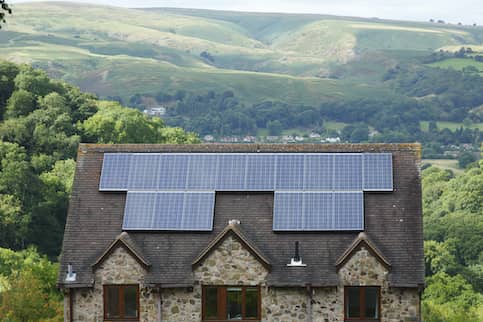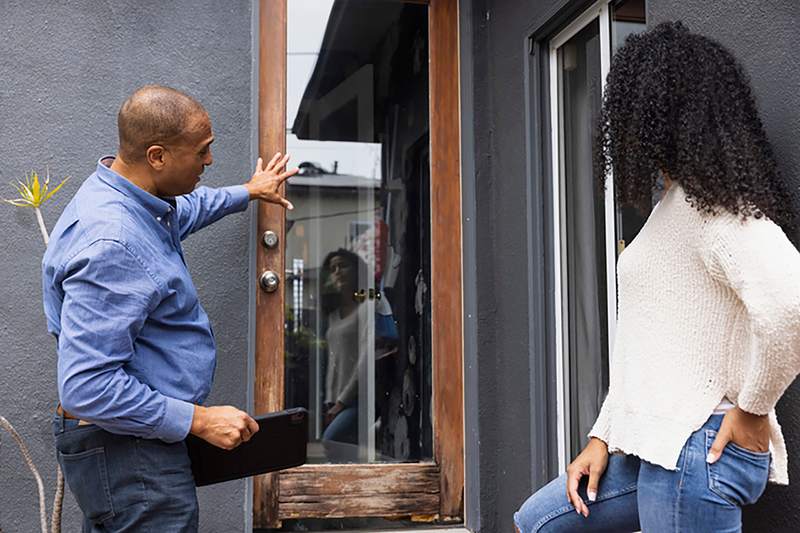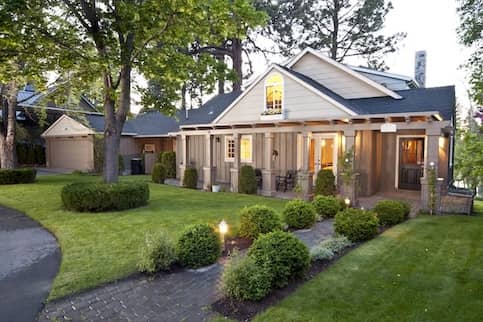If you don’t mind using a little sweat equity, buying a “fixer-upper” home is one way to potentially purchase a home for a below-market price. For the right buyer, a fixer-upper home is a good investment, but it takes a serious commitment of time (and money).
If you’re ready to look at fixer-upper houses, let’s walk through the buying process and uncover the pros and cons of a fixer-upper purchase.
Key Takeaways:
- A fixer-upper home is often cheaper than purchasing a turnkey one.
- Choosing to purchase a fixer-upper can be a good investment, but it may cost more than you anticipate.
- There are a few ways to finance a fixer-upper, from using a government-backed mortgage to taking out a personal loan.
What Is A Fixer-Upper House?
A fixer-upper house usually needs a lot of attention. When you buy one, a fixer-upper may need a huge renovation or rehabilitation or, at the very least, a complete cosmetic makeover, like removing carpet or a coat or two of paint on the walls. If you want to buy a fixer-upper, you can browse the sold as-is listings.
These homes may be sold at a lower price than similar homes in the neighborhood, but they often need extensive and expensive work. However, in competitive markets, even fixer-uppers may sell close to market value if the location is in high demand.
If you are handy or can pay someone who is, buying a fixer-upper gives you the freedom to create the home you want. Before you buy one, do your due diligence on the house and the property. It takes time, money and patience to rehab or renovate a home, especially a historic, older home. Some people buy fixer-uppers to flip or use as rental properties, while others may buy them to get more square footage for less money.
What’s Your Goal?
Buy A Home
Discover mortgage options that fit your unique financial needs.

Refinance
Refinance your mortgage to have more money for what matters.
Tap Into Equity
Use your home’s equity and unlock cash to achieve your goals.
Pros And Cons Of Buying A Fixer-Upper
Taking on a fixer-upper house has challenges and rewards, so it is important to make sure to weigh both the pros and the cons of such a purchase.
Pros
- A fixer-upper can be a great path to first-time homeownership.
- You may be able to buy a larger home in a better neighborhood.
- In a competitive housing market, you may have more competition for move-in-ready homes.
- A fixer-upper home can come with a lower initial cost if you finance only the purchase of the home. This can help you keep your monthly mortgage payments low and save for renovation costs over time.
- With a fixer-upper, you can really personalize the home and make it your own.
Cons
- Depending on what needs to be fixed, it may require a special skill set.
- You could lose money if renovation costs exceed your budget or if the final home value doesn’t match your investment.
- There is also a significant time investment; depending on what other things you have going on in your life, renovation will likely take much longer than you initially anticipate.
Ready To Become A Homeowner?
Get matched with a lender that can help you find the right mortgage.
How To Finance A Fixer-Upper
If you want to buy a fixer-upper but are worried about running out of your savings during the rehab, there are a few financing options available for qualified buyers.
- FHA 203(k) loans: If you plan to use a Federal Housing Administration (FHA) loan to buy a fixer-upper, this option gives you money to buy the home and rehabilitate it. You’ll have to meet specific requirements to qualify for this loan, but an FHA 203(k) loan can be a good choice, especially for first-time home buyers.
- Home improvement loans: These loans can be used for major overhauls or smaller cosmetic changes. Banks and other lenders may offer a type of personal loan designed to be used for renovations and updates.
- Home equity loans or HELOCs: If you already own a home, you could tap its equity and take out a home equity loan or home equity line of credit (HELOC) to pay for fixing up your fixer-upper. This option may work best for buyers who are considering flipping or renting out their purchase.
- Fannie Mae HomeStyle Renovation loans: These are conventional mortgages that allow borrowers to buy fixer-uppers or homes that need repairs and wrap the costs of the improvement projects into the monthly mortgage payment.
- USDA loans: The U.S. Department of Agriculture (USDA) offers renovation loans to qualified buyers who want to buy fixer-uppers in designated rural areas. You may be able to finance up to $35,000 for nonstructural repairs if you take out a USDA mortgage. For larger-scale rehabilitation projects, ask about qualifying for a larger USDA-backed renovation loan.
Take The First Step To Buying A Home
Find a lender that will work with your unique financial situation.
7 Tips For Buying A Fixer-Upper Home
If you want to buy a fixer-upper, here are some things to consider.
1. Figure Out What You’re Working With
When you are looking at fixer-uppers, always keep an open mind, says Ali Berry, a real estate broker in Michigan. “I tell my clients to look at the layout of the house,” he says. “The paint, carpet, floors, cabinets or fixtures can be changed relatively easily.”
Berry says if you are buying a fixer-upper, you also want to make sure there are no foundation issues or problems with the home’s mechanicals, such as heating and cooling systems.
“Cosmetics can be changed, but the flow of a house cannot without spending a fortune,” he says.
Pro tip: When you visit a fixer-upper, take stock of all the potential cosmetic changes and look for potential structural concerns, like cracks in the foundation or a sagging roof. Hiring a home inspector is critical when you are buying a fixer-upper, even if most lenders don’t require one.
2. Estimate Your Budget, Then Add More Money
Fixer-uppers are a mixed bag, and depending on how old the home is, that bag can be full of a lot of unpleasant surprises,” says Mark Scott, CEO of MARK IV Builders. “Structural issues and other things can often throw a budget totally out of whack,” says Scott.
If you are unsure of the money you need for a project, add more. Most experts advise planning on an extra 5% – 10% of your total and putting it aside for any problems or changes that may occur during the rehab or renovation. If you are hiring a contractor, ask your friends and neighbors for recommendations. Take the time to look over multiple bids for your project to find the best option for your budget.
3. Predict Your Market Value
Another important step in how to buy a fixer-upper is to calculate the value of your fully renovated home. Free online tools on sites like Redfin and Trulia can help you figure out the ballpark, but they may not always be accurate and shouldn’t be relied on as a final answer.
A good way to estimate your after-repair value (ARV) is by looking at comparable houses in the neighborhood. If you’re financing the purchase of your fixer-upper with a renovation loan product, some lenders will use a special type of appraisal.
After the appraiser visits the property, they’ll complete a report that explains how they calculated the future value of the home. You can use the dollar amount they provide or use their research to predict your potential future market value.
4. Get An Inspection
Having an inspection is especially critical before you commit to buying a fixer-upper home. It can be easy to see necessary cosmetic changes, like broken tile or peeling paint. But it is hard to know without a professional’s input whether or not those cracks in the floor are hints of serious foundation issues, or a few missing shingles are a warning that the roof needs to be replaced in its entirety.
Paying for a professional inspection will help diagnose some of those bigger, more expensive problems. After you review the inspector’s checklist, you can decide if you want to invest in or walk away from the purchase.
5. Be Prepared For Disruptions In Your Home Life
A fixer-upper project can take months or years to complete, depending on the scope of work. You should be prepared to either live with the disruptions or pay for alternate living arrangements while the project is completed. In some cases, it may not be safe to reside in the home. If that happens, you may have to pay a mortgage plus rent while you live off-site.
Always consider how much disruption your household can manage. For example, if you have children, it can be difficult to go weeks or months without a kitchen.
6. Choose Projects Strategically
You wouldn’t want to hang your drywall while the roof is still leaking, and it doesn’t make sense to install your carpet while you still have to paint. This is especially true if you’re planning on living in the house while you’re doing all the renovations.
Gutting your kitchen might make more sense in the summer, when you can count on grilling out on your patio, than in the winter, when you have nowhere else to eat. Ask your contractor about the order of his punch list for updating your home.
7. Count On Doing Some Of The Work Yourself
If you have the time and skills (or are willing to learn), do-it-yourself home improvements will usually be the most cost-effective route. It may even be possible to earn back your time and effort in the form of sweat equity should you ever sell.
FAQ
Also, buyers with skills and the capacity to use sweat equity to improve their home should consider fixer-uppers. They are also appealing to investors and house flippers, who seek out homes in high-potential areas or vacation spots.
Buyers should also consider whether they have the time, risk tolerance, and emergency funds to handle unexpected issues that arise during renovations.
The Bottom Line About Fixer-Upper Houses
While fixer-upper homes come with added complications, they can offer considerable advantages for buyers who are ready to take on the work. Fixer-uppers can provide home buyers, especially first-time buyers, the opportunity to buy an affordable home, build equity and gain hands-on experience in creating a home environment based on their personal style.
Buying a fixer-upper is an investment of your time and money, but if you are prepared for the job, a fixer-upper can also be a fun and rewarding experience.

Natasha Etzel
Natasha Etzel is a financial writer with over a decade of experience. She has covered various financial topics, including mortgages, personal loans, home equity loans, debt consolidation, and refinancing. She writes for financial companies, including mortgage lenders, and various publications, including NerdWallet, Newsweek, The Motley Fool, and more.












